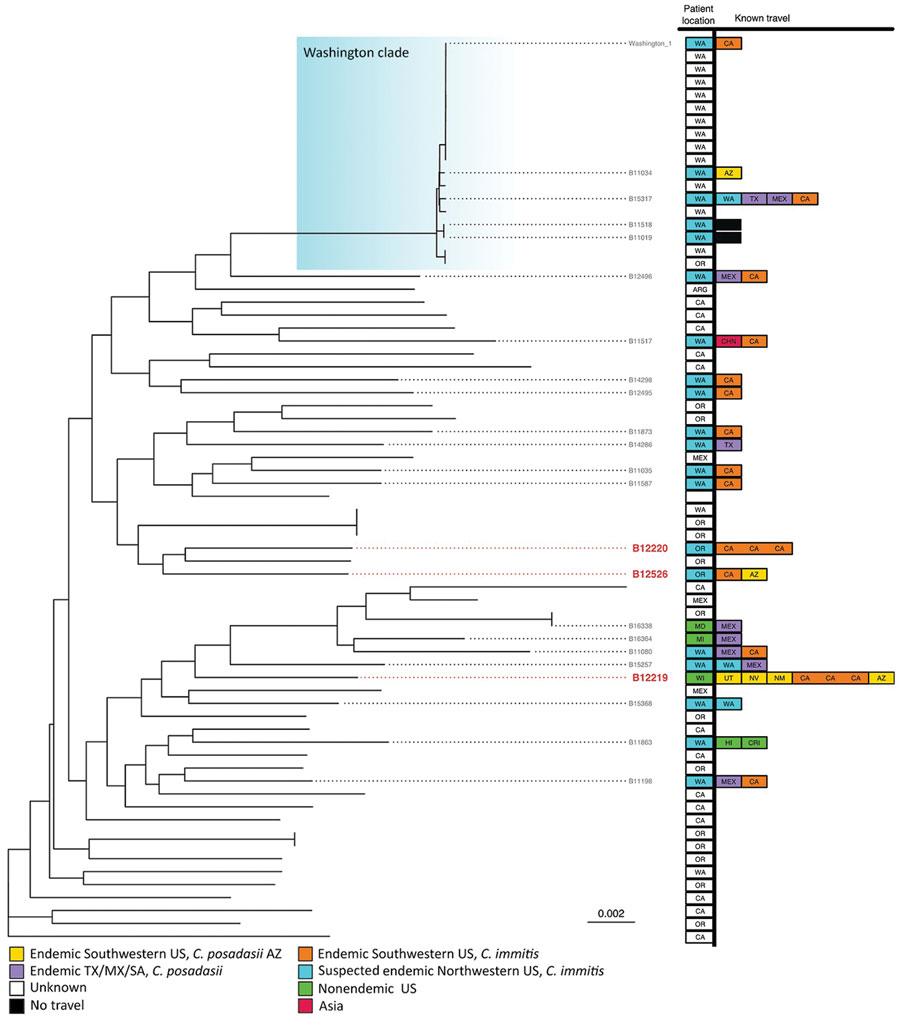Volume 29, Number 1—January 2023
Research
Genomic Epidemiology Linking Nonendemic Coccidioidomycosis to Travel
Figure 2

Figure 2. Summarized maximum-likelihood phylogenetic tree for Coccidioides immitis isolates from study of genomic epidemiology linking nonendemic coccidioidomycosis to travel and reference isolates. Each recognized phylogeographic clade is highlighted with a colored gradient labeled in its top right corner. Samples with travel history are presented with locations of isolation and all known patient travel, with colors for the geographic regions. Red bold tip labels indicate samples sequenced for this study; other samples are included when including travel history or otherwise mentioned in the main text.
Page created: October 18, 2022
Page updated: December 21, 2022
Page reviewed: December 21, 2022
The conclusions, findings, and opinions expressed by authors contributing to this journal do not necessarily reflect the official position of the U.S. Department of Health and Human Services, the Public Health Service, the Centers for Disease Control and Prevention, or the authors' affiliated institutions. Use of trade names is for identification only and does not imply endorsement by any of the groups named above.